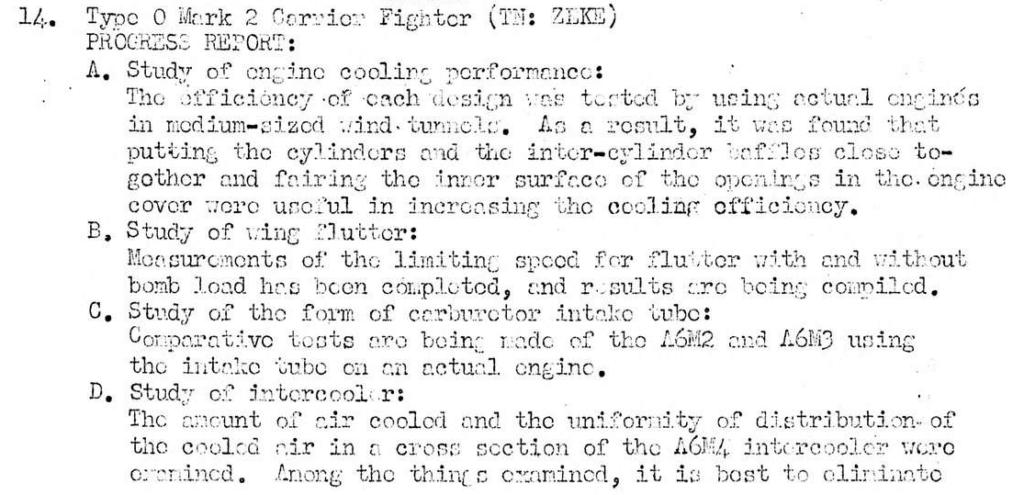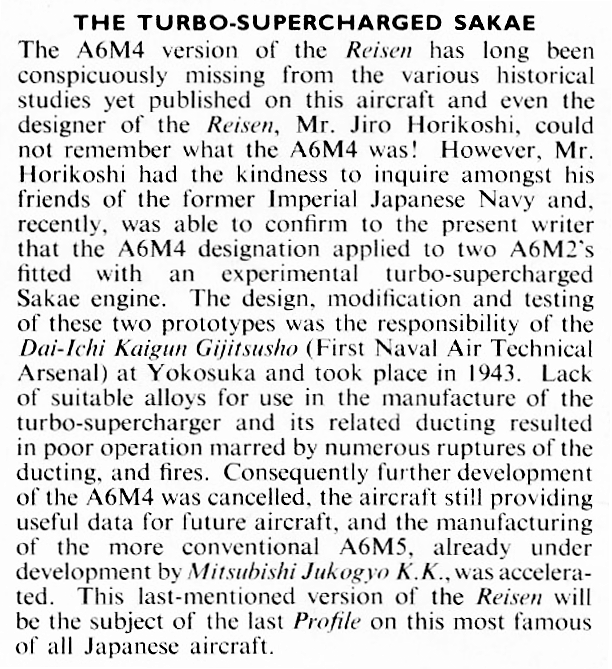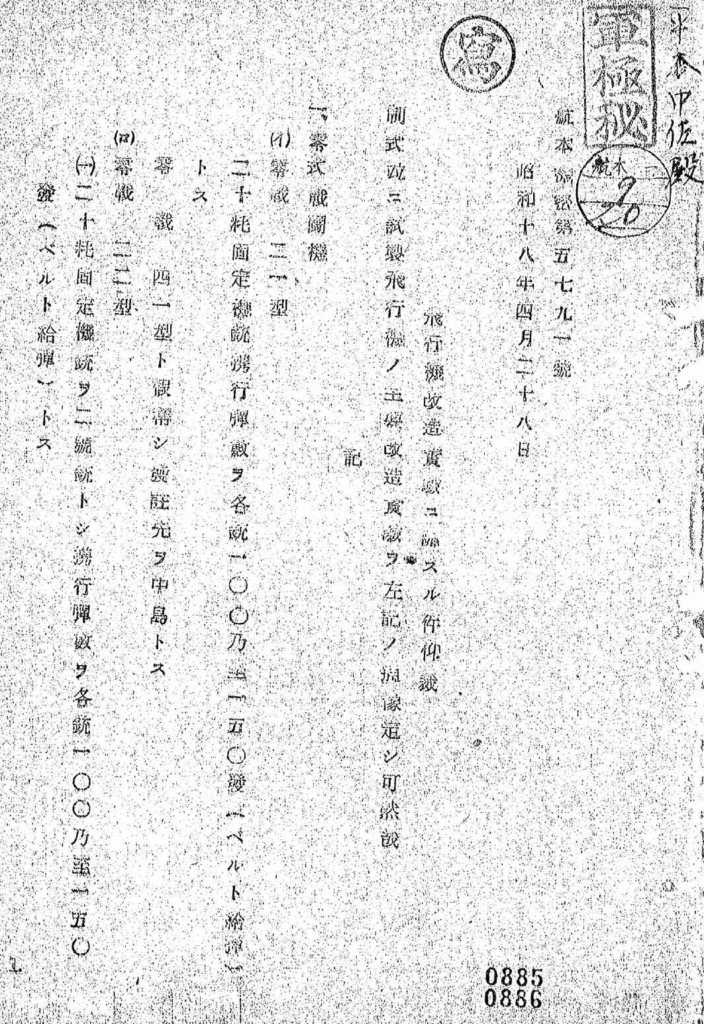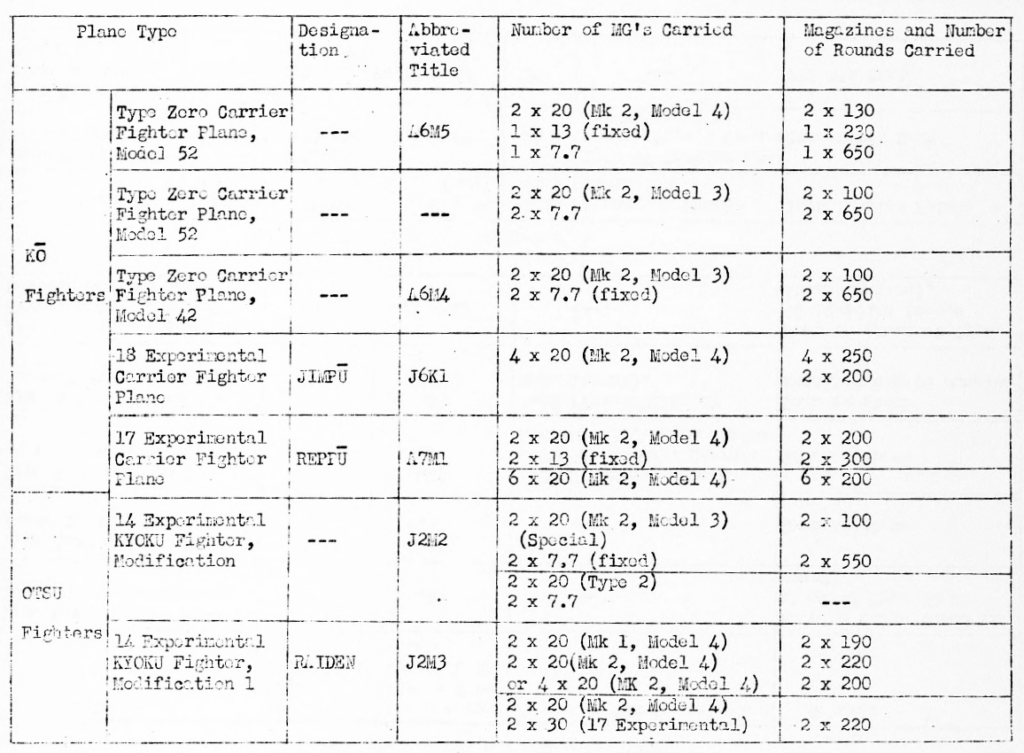The A6M4 is an “unknown” variant of the Zero Fighter that has been described as a variety of things over the years. The most common theory in English writing is that A6M4 was a designation for a type of Zero fitted with a turbocharger to its Sakae engine. Another common theory is that the number was skipped to avoid using the unlucky number “4”, which can be pronounced the same way as “death” (shi) in Japanese language.
A handful of original Japanese documents exist which can be used to paint a vague outline of what the A6M4 actually was. This article serves as a summary of the various wartime references to an “A6M4”, or otherwise a “Model 40” Zero Fighter, that are known to me.
A6M4 as a Turbocharged Zero Fighter
In the February 1942 Arsenal Gazette of the Navy Aviation Technical Arsenal (Kūgishō), a report dated February 4th outlined a research meeting that was to take place on the 9th of the same month at 15:00. The subject of the meeting was a structural examination of a partially wooden model of a Sakae Model 10 engine fitted with a turbocharger. The purpose was for the eventual installation of a turbocharger in the Zero Fighter.

The next reference in the Arsenal Gazette was dated February 10th, and it outlined the schedule of the first research meeting concerning the fitting of the Zero Fighter with an Ishikawajima turbocharger. This meeting was to take place on the 19th of the same month at 13:00.

It should be noted that these brief meeting schedules did not state which model of Zero Fighter was to be equipped with the turbocharged engine, nor was a designation for this prospective variant given. However, at this time, the engine under examination was a Sakae Model 10-series, which is of the same series as the engine installed in the A6M2.
The next reference to the turbocharged Zero Fighter is more well-known: an English translation of a Japanese document that was captured on Saipan, titled “Quarterly Report on Research Experiments,” and dated October 1, 1942. This is where the first mention of the “A6M4” as a turbocharged Zero variant is known to appear, and the relevant text is in the images below.


Assuming that the translator did not make a typing error (which is more common in translated documents than you may hope), at this time, the “A6M4” was a designation for a development of the A6M3 with an intercooler — almost certainly indicating that it would have a turbocharged engine. The next step in development was for wind tunnel testing to be carried out, according to the record.
We can be fairly sure that this “A6M4” was a development of the A6M3, because it is written under the general section concerning the “Type 0 Mark 2 Carrier Fighter”, which was an earlier designation of the Zerosen Model 32 (A6M3).
On the other hand, Francillon wrote the following entry in his 1967 title “The Mitsubishi A6M3 Zero-Sen (Hamp).”

Francillon stated that Jirō Horikoshi (the head designer of the Zero Fighter) personally informed him that the A6M4 designation referred to two A6M2s that were fitted with a turbocharger in 1943. Unsurprisingly given the situation of turbocharger implementation in Japan at that time, this testing was described as a failure.
Whether it is the case that the turbocharged Zero Fighters were converted from the A6M2 or A6M3, there is reasonable evidence here to state that the “A6M4” designation was most likely applied to the turbocharged Zero Fighter project by late 1942. However, it seems that upon the failure and abandonment of these prototypes, the designation was later re-used for other projects.
Turbocharged Sakae Engine
A Sakae Model 11 engine with a wooden mockup of a turbocharger installation attached to it is pictured below. This is likely to be the same model that was examined at the Kūgishō in early 1942. It can be observed that the compact installation model did not actually include an intercooler at this time.

The turbocharger represented by this model was the Ishikawajima Model IET4. The Model IET4 was designed to maintain the full pressurization of the Sakae engine up to an altitude of 7000 meters.
Fake A6M4
The image on the left below is supposed to show an A6M2 with a turbocharger. In fact, to this day it is a top image result when searching online for “A6M4” or “Zero with turbocharger”. However, it’s just a photoshop of an image of a standard A6M2, compositing a picture of the turbocharger from the Army prototype fighter Ki-87.


A6M4 (?) as an A6M2 with Belt-Fed Guns
Another document possibly related to the “A6M4,” titled “Matters Pending Approval Regarding Airplane Remodeling Experiments,” was created on April 28th, 1943. This document shows various tentative decisions regarding aircraft models in development, including future variants of the Zero fighter.
The following relevant text is quoted:
- Type 0 Fighter
- (a) Zerosen Model 21
- Changed 20mm fixed machine gun ammo capacity from 100 rounds per gun to 150 rounds per gun (belt feed).
Provisionally designated as Zerosen Model 41 and ordered to Nakajima.- (b) Zerosen Model 22
- (1) Changed 20mm fixed machine gun ammo capacity from 100 rounds per gun to 150 rounds per gun (belt feed).
(2) Abolished wingtip folding mechanism and shorten wingspan by about 1 meter.
Provisionally designated as Zerosen Model 52 and ordered to Mitsubishi.


Therefore, we can say that as of April 28, 1943, it had been tentatively decided to give the designation “Zerosen Model 41” to a Zerosen Model 21 (A6M2) fitted with belt-fed 20mm machine guns. The designation “Zerosen Model 52” was to be tentatively provided to a Zerosen Model 22 (long-wing A6M3) with belt-fed 20mm machine guns and shortened wings.
In the Japanese Navy’s aircraft naming nomenclature at the time, the first numeral of the model number represented airframe modifications, while the second number represented engine modifications. According to this system, the reasoning behind these provisional designations is briefly as follows:
- Model 21 + 1 airframe modification (belt-fed guns) ⇒ Model 41
(3_ is skipped because it is occupied by the shortened square wing modification of Model 32). - Model 22 + 2 airframe modifications (belt-fed guns, shortened round wingtips) ⇒ Model 52
(3_ is skipped for the same reason as prior, because Model 32 had shortened wings with square wingtips, while Model 52 had round wingtips).
No code names are listed in this document, and just because it was a “Model 4_” Zero Fighter does not mean that it would necessarily be designated A6M4.
Furthermore, there is no known information which would suggest that the Model 41 was ever built. The Model 52, of course, would go on to be mass produced.
However, when the Model 52 was actually adopted into service on August 23rd, 1943, it was recorded that its prior tentative designation had still been the “Type 0 Ship-Based Fighter Model 22 Kai”, as can be seen in the following document (which also shows the adoption of the Gekkō Model 11).
Type 0 Ship-Based Fighter Model 22 Kai (shortened wingtips of main wing) is adopted as a weapon and designated as Type 0 Ship-Based Fighter Model 52.

A6M4 as an Early Name for A6M5
To quickly recap from the previous section, this is what had been tentatively decided as of April 1943:
- Model 2X: 12 meter wingspan with folding wingtips.
- Model 3X: 11 meter wingspan with square wingtips, no folding mechanism.
- Model 4X: 12 meter wingspan (Model 2X airframe) with belt-fed 20mm MGs.
- Model 5X: 11 meter wingspan with round wingtips, no folding mechanism, and belt-fed 20mm MGs.
In reality, the belt-fed 20mm MG (that is, the Type 99 20mm Mark 2 Fixed Machine Gun Model 4) was not actually ready in time for the mass production of the Model 52.
So while the Model 5X had been defined as having 2 modifications over the Model 2X, belt-fed 20mm guns (which is what brought it to 4X) and clipped, rounded wingtips, the actual first production Model 52 or A6M5 only had the latter modification.
This is important to consider when looking at the next and final document regarding the A6M4, which is a translated document about aircraft armament, captured on Peleliu. The data comes from a Japanese notebook and was probably created in mid-1944. Here the “Model 42” is listed, with the code name “A6M4” specified.

Above the Model 42 is two Model 52 (A6M5) with differing armaments. The top Model 52 would later be known as the Model 52 Otsu, or A6M5b, and the lower Model 52 is the standard initial production model without belt-fed MGs – its designation would not change.
Relevant trivia: the designation system that introduced the ability to define minor “subvariants” of Navy aircraft with “Kō, Otsu, Hei…” was only introduced in November 1944. Before this, all Model 52 armament varieties were simply “Model 52”.
As we can see in the document above, the A6M4 has the same armament as the initial A6M5: the Type 99 20mm Mark 2 Fixed MG Model 3, which is not belt-fed. Unfortunately this table is focused purely on armament, so there are no other details to compare.
So, what is the A6M4?
Considering that this Model 42 clearly does not have belt-fed MGs, we can assume that the concept of the “Model 4X” constituting “a Model 2X airframe with belt-fed MGs” had been abandoned at this time. So we may forget that the “Model 41” was ever proposed, which leaves an empty space for an airframe modification in the Zero Fighter’s designation list.
The Model 52 was originally defined as having both belt-fed guns and the clipped, rounded wingtips, but was at first produced with only the latter modification. When changing to belt-fed guns justified an increase in airframe model number in the first place, logically, losing the belt-fed guns would seem to justify regressing the model number by one. As the Model 41 was abandoned without being constructed, there is no conflict.
Therefore my theory is that the Model 42 (A6M4) is the initial Model 52 (A6M5). In my assumption, it was most likely a tentative designation, and was renamed as “A6M5” to avoid unnecessary confusion.
CONCLUSION
In consideration of all of the above, I would say that the “A6M4” is:
A provisional designation that was never officially adopted, and that was used by at least two models of the Zero Fighter at different points in time.
The sparse available evidence suggests that “A6M4” once referred to both the turbocharged Zero, and later the initial model of the A6M5, but neither was ever set in stone.
Leave a Reply